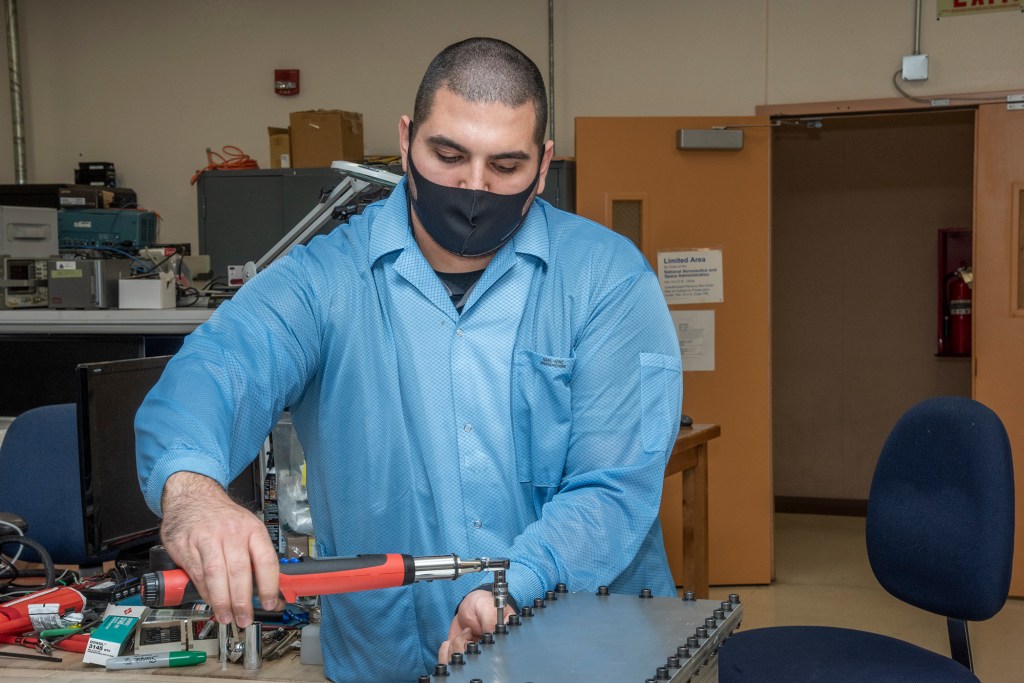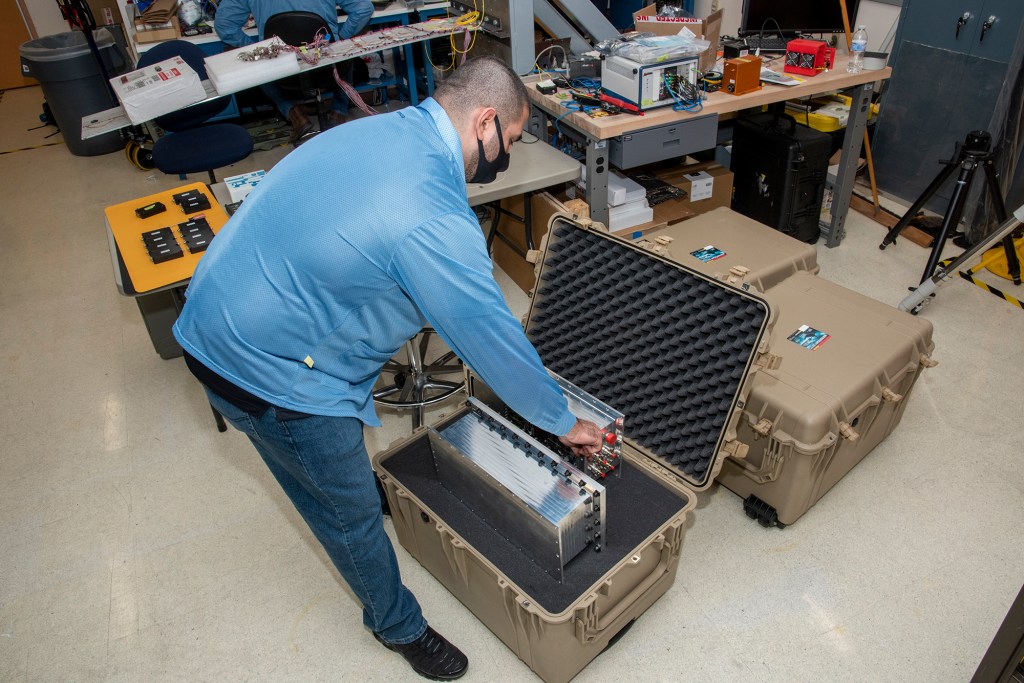A system originally developed to collect strain and other measurements on aircraft has been advanced and its durability enhanced for potential use in space.
Researchers at NASA’s Armstrong Flight Research Center in Edwards, California, hope to validate the new version of their Fiber Optic Sensing System (FOSS) with four research boxes recently sent to NASA’s Langley Research Center in Hampton, Virginia.
Environmental testing will determine if the systems can withstand heat, cold, vibration, pressure and other severe conditions encountered during a rocket flight and if there is potential signal interference. Shock testing, the only part of the work that will not be completed at Langley, will happen at the MGA Research Corp. in Manassas, Virginia, about 160 miles north of the NASA center.
“It will take about four to five months to complete the testing that will start with some functional checkouts of the boxes once they arrive at Langley,” said Eric Miller, Armstrong’s FOSS project manager.
If it is successful, this enhanced system called the Compact Fiber Optic Sensing System (cFOSS), or the FOSS rocket box, offers the ability to take thousands of measurements along a fiber optic wire about the thickness of a human hair.
Jonathan Lopez, an Armstrong research engineer, completed the final prep of the systems heading to Langley. He installed the box lids, cut foam for each unit to cradle the system and placed the FOSS boxes in separate protective cases for transport. Equipment to facilitate the testing also was sent.
“The FOSS team has spent the last few years designing these systems to ensure they meet and exceed the strenuous requirements performing in a rocket launch environment,” Lopez said. “To help ensure this an engineering design unit was integrated and put through pre-environmental testing here last year. It is a great feeling to finish the integration process of the FOSS space flight units.”
The engineering design unit is a fifth box that will stay at Armstrong and will not be sent for environmental testing, he explained. That unit that will fly on a future Blue Origin New Shepard rocket through NASA’s Flight Opportunities program. The space FOSS experiment will travel as a self-contained experiment on the suborbital rocket and measure strain and temperature with the payload in a locker on the vehicle.
Lopez and Allen Parker, Armstrong FOSS senior research engineer, will travel to and from Langley to assist in the integration, operation, data collection and any trouble-shooting challenges that arise.
Of the four systems sent to Langley, one is a qualification box that will be put through extremes beyond what any system would experience in use, Miller said. The other three boxes will be put through more standard requirement testing of the conditions the units would experience in flight.
One of three space flight rated boxes will go on the Low-Earth Orbit Flight Test of an Inflatable Decelerator (LOFTID).
The space-rated FOSS will measure distributed temperatures on the backside of the LOFTID aeroshell that is anticipated to launch in 2022. Measuring those temperatures will give engineers a thermal map of how the decelerator heats up. The inflatable aeroshell, which is less rigid than a traditional heat shield, is designed to decelerate and protect heavy payloads from the intense heat of atmospheric re-entry.
The remaining two space-rated boxes will support the Launch Services Program (LSP) at NASA’s Kennedy Space Center in Florida in partnership with United Space Alliance on flights of its Vulcan rocket.
Future applications of the technology could include monitoring spacecraft systems during missions to the Moon and landings on Mars.
Once FOSS is rated for use in space, the Advanced Cislunar and Surface Capabilities (ACSC) enhanced tempFOSS sensor could be considered for use on future Artemis missions to monitor extreme distributed cryogenic fuel temperatures.
Because launch vehicles have a number of different thermal and mechanical subsystems, Parker explained, the team envisions a FOSS system that will provide a number of measurements on the cryogenic tanks, not just on the outside of the tank but possibly also on the inside to measure fuel level.
Armstrong researchers are working on the effort with a team at NASA’s Glenn Research Center in Cleveland.
“We just completed a sync review and the plan is for the testing to be next summer,” Miller said. “The prototype testing will be at Glenn. We will fabricate some cryogenic sensors and complete some initial checkouts at Armstrong and then we will integrate those sensors into their test set up this spring for testing in the summer.”
Much of the technology effort to advance FOSS for use on rockets was funded by the Space Technology Mission Directorate’s Center Innovation Fund. In addition, LSP and LOFTID also have provided funding in support of the FOSS rocket box development.
Jay Levine, X-Press Editor
NASA Armstrong Flight Research Center






























